I discovered today that a glass packaged axial leaded 5V Zener diode will become a source of about 0.450 Volts when the glass package is held in the beam of a low-power purple (405nm) laser pointer.
The test setup: Scope probe (with ground clip) attached across the zener. With laser turned off, scope reads zero volts as expected. Turning laser on and aiming it at the glass package of the diode, the scope reads a fairly stable 450mv (noisy though: 30mv p-p ~100kHz). (edit: this noise could be a product of the laser-driver step-up circuit)
The laser is a cheap one and purports to be 1mW rated.
Interrupting the beam with opaque materials instantly stops the voltage reading from the diode. Modulating the laser with a 5kHz square wave causes the diode to exhibit a 5kHz response (in phase with the laser's modulation as far as my scope can tell).
I realise that this is rather unscientific but my question is this:
Is this typical of glass zeners and if so, should a designer avoid using glass zeners in sensitive analog circuits. Or is this too specific to be a real-world problem?
